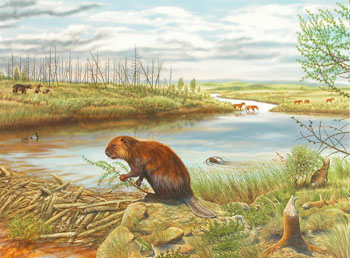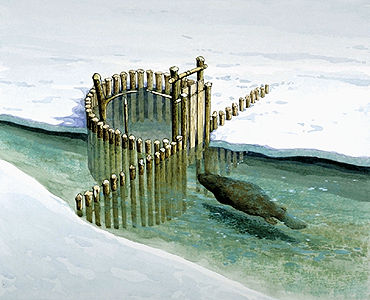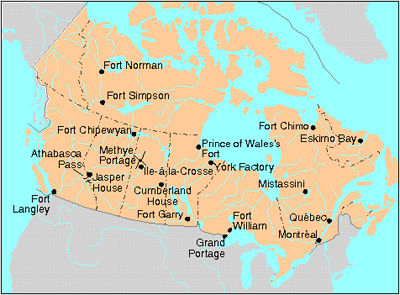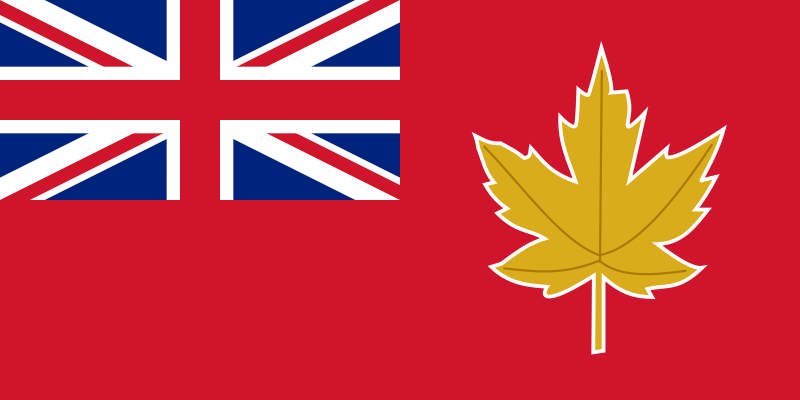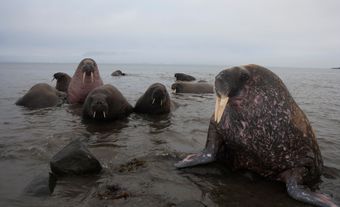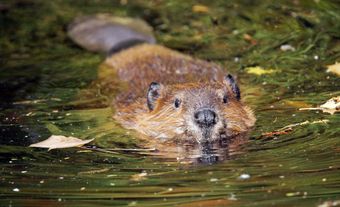In this round of six degrees of Canadian history, we start with a top-selling Canadian band and wrap up in the flag. Though not exactly a critics’ darling, Nickelback has sold more than 35 million albums worldwide and regularly tops the charts in Canada and abroad. When the National Flag of Canada was first proposed in 1964, it was an equally polarizing emblem of Canada. Nickelback, this is how you remind me of the Canadian flag.
The following article is from our Six Degrees of Canadian History series. Past series are not updated.
Nickelback

Nickelback is a rock band that formed in Hanna, Alberta, in 1995. Comprised of core members Chad Kroeger (vocals, guitar), Ryan Peake (guitar) and Mike Kroeger (bass), the band came into the spotlight with its second album, The State (1998). After being reissued in 2000, the album earned Nickelback a 2001 Juno Award for Best New Group and was certified platinum in Canada. The band’s third album, Silver Side Up (2001), contained their monster breakthrough "How You Remind Me," which became the most-played song in the US in 2002 and Billboard ’s highest-charting rock song of the decade. One of the most commercially successful Canadian bands ever, Nickelback has sold more than 35 million albums worldwide and won 12 Juno Awards from 35 nominations.
The other nickel back — the back of the nickel, or its “tails” side — depicts the beaver, one of Canada's official national emblems.
Beaver

An herbivorous mammal weighing 16–35 kg and measuring up to 1.3 m from snout to paddled tail, the beaver (Castor canadensis) is Canada's largest rodent and the second-largest rodent in the world (after the capybara). It is primarily nocturnal and lives a semi-aquatic life. One of the only mammals, other than humans, that can manufacture its own environment, the beaver is known for building dams, canals and lodges. Its colonies are created by one or more beaver-built dams, which provide still and deep water for protection against predators. An emblem of Canada older than the maple leaf, the beaver has had a greater impact on Canadian history and exploration than any other animal or plant species.
The rich-pelted beaver was the staple of the fur trade that prompted Europe's commercial interest in North America.
Fur Trade

For nearly 250 years, from the early 17th to the mid-19th century, the fur trade was a vast commercial enterprise across the wild, forested expanse of what is now Canada. Sustained primarily by the trapping of beavers to satisfy the European demand for felt hats, the intensely competitive trade opened the continent to exploration and settlement, financed missionary work, established social, economic and colonial relationships between Europeans and Aboriginal people, and played a formative role in the creation of Canada.
Archibald Belaney (also known as Grey Owl), lived as a fur trapper before he gave up the practice and became one of Canada’s earliest and best known conservationists.
Archibald Belaney, Grey Owl

Archibald Stansfeld Belaney, alias Grey Owl, writer, conservationist (born 18 September 1888 in Hastings, England; died 13 April 1938 in Prince Albert, SK).
Grey Owl was a well-known conservationist and writer in the 1930s. Although born in England, he portrayed himself as the son of a Scottish man and Apache woman. His articles and books stressed wilderness conservation and became bestsellers in Canada and Britain. Shortly after Grey Owl died in 1938, a newspaper article exposed his real identity as Archibald Belaney. He has been the focus of several biographies, articles and films, and his books have been reprinted many times.
Part of Belaney’s long and complicated story was the subject of a Heritage Minute.
Heritage Minutes

The Heritage Minutescollection is a bilingual Canadian legacy project comprised of 60-second short films, each depicting a significant person, event or story in Canadian history. They are produced by Historica Canada, the not-for-profit organization that also publishes this encyclopedia. First released in 1991, the Heritage Minutes have been shown on television, in cinemas and online, and have become a part of Canadian culture. Today, the collection includes 82 episodes.
One of those episodes takes a look at the political maneuvering at the centre of the 1964 Flag Debate.
Canadian Flag

The National Flag of Canada, also known as the Canadian Flag or the Maple Leaf Flag ( l'Unifolié in French), consists of a white square with a stylized, 11-pointed red maple leaf in its centre flanked by a red band on both sides. A joint committee of the Senate and House of Commons voted for the present flag in 1964 against formidable odds. After months of debate, the final design, adopted by Parliament and approved by royal proclamation, became Canada's flag on 15 February 1965.

 Share on Facebook
Share on Facebook Share on X
Share on X Share by Email
Share by Email Share on Google Classroom
Share on Google Classroom


